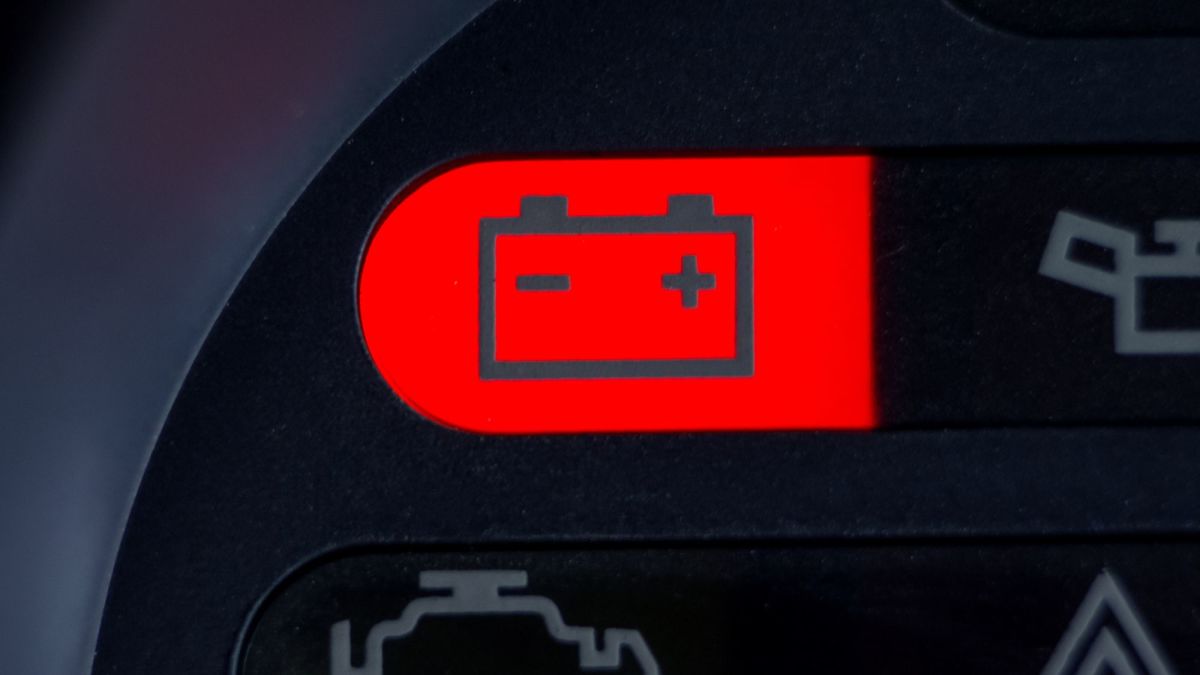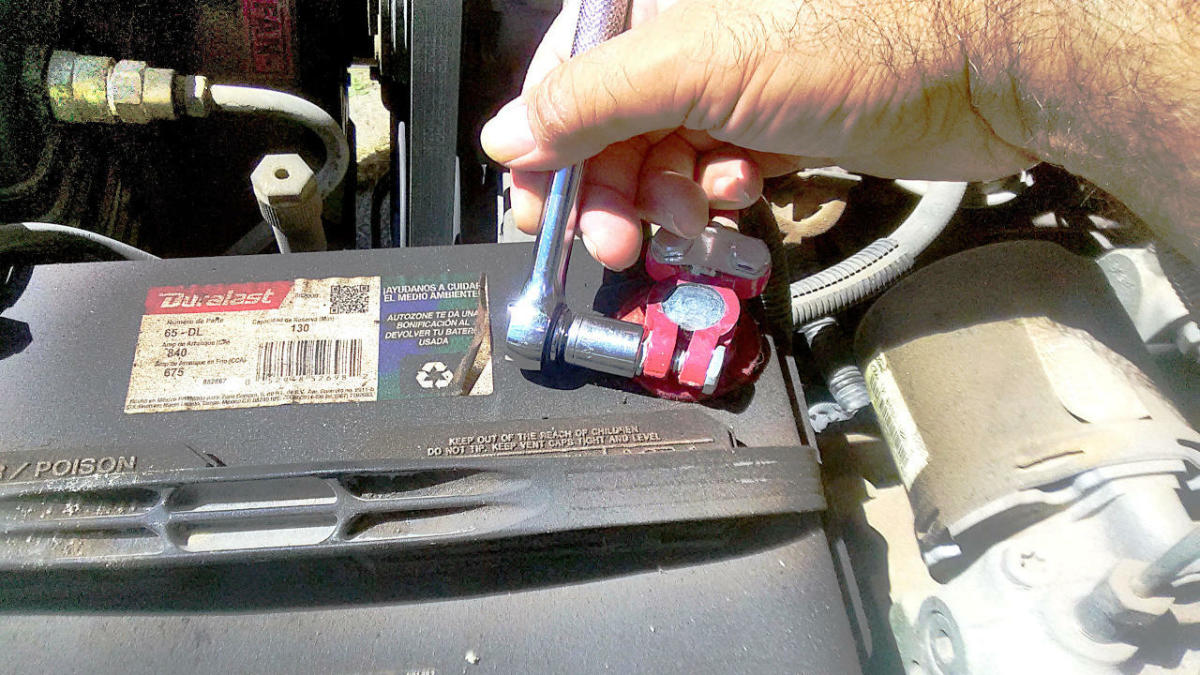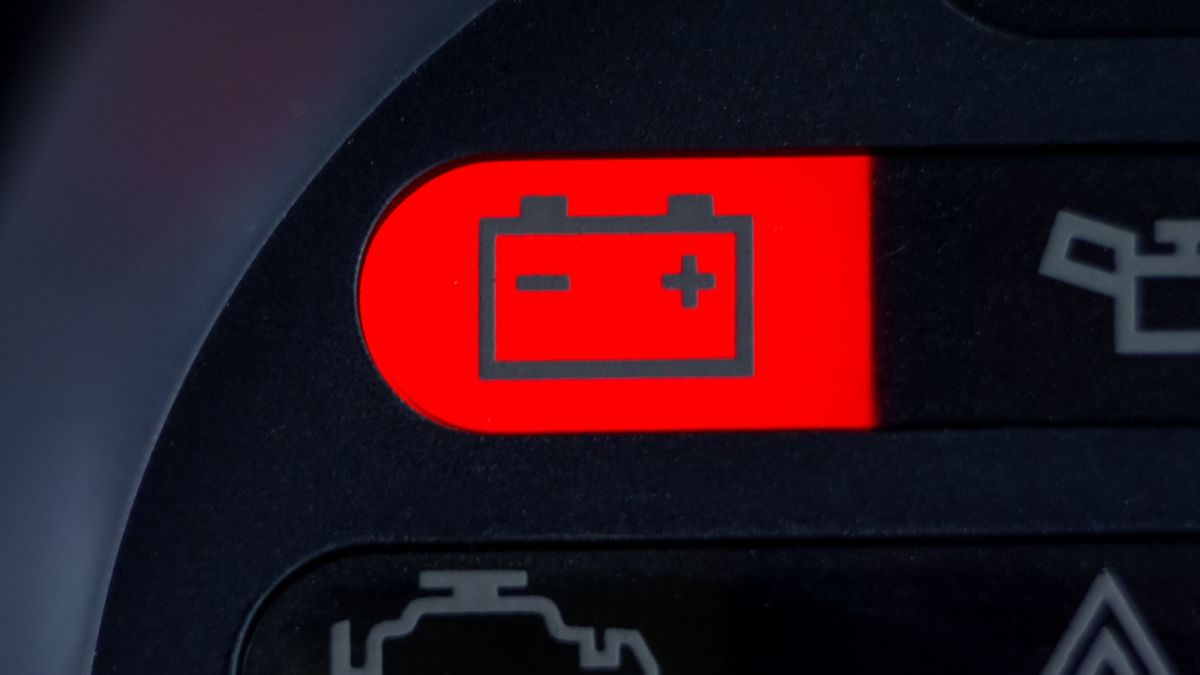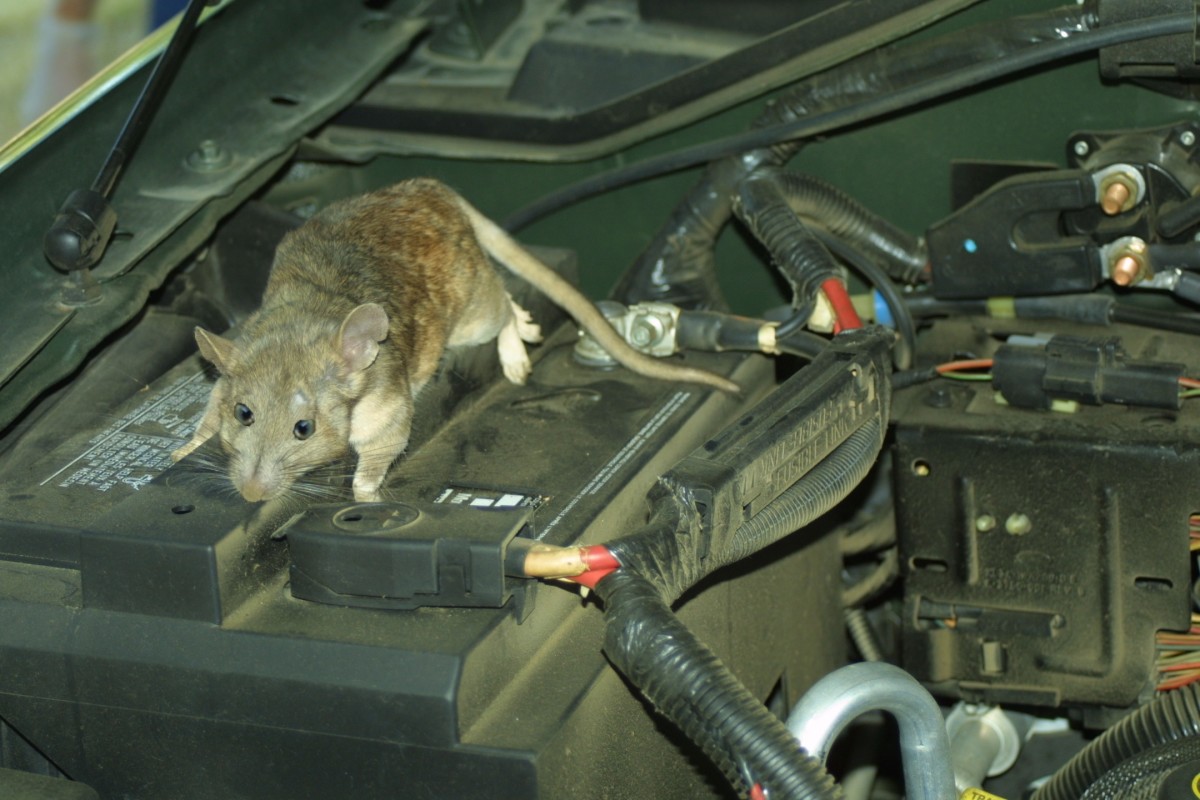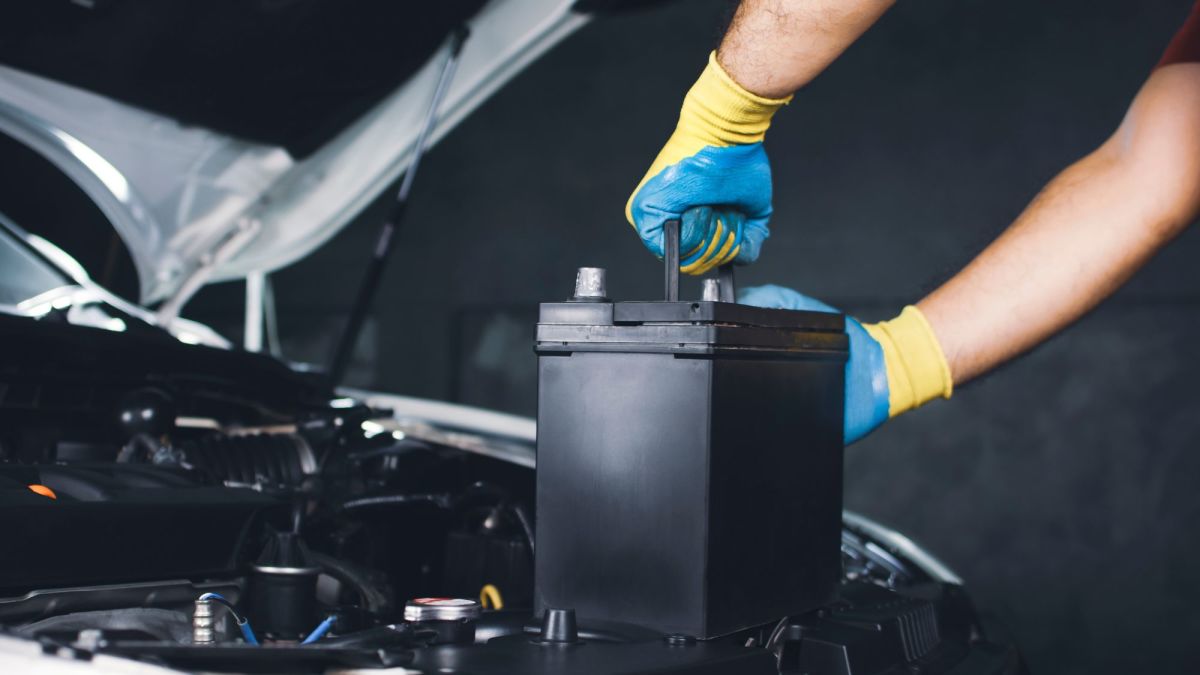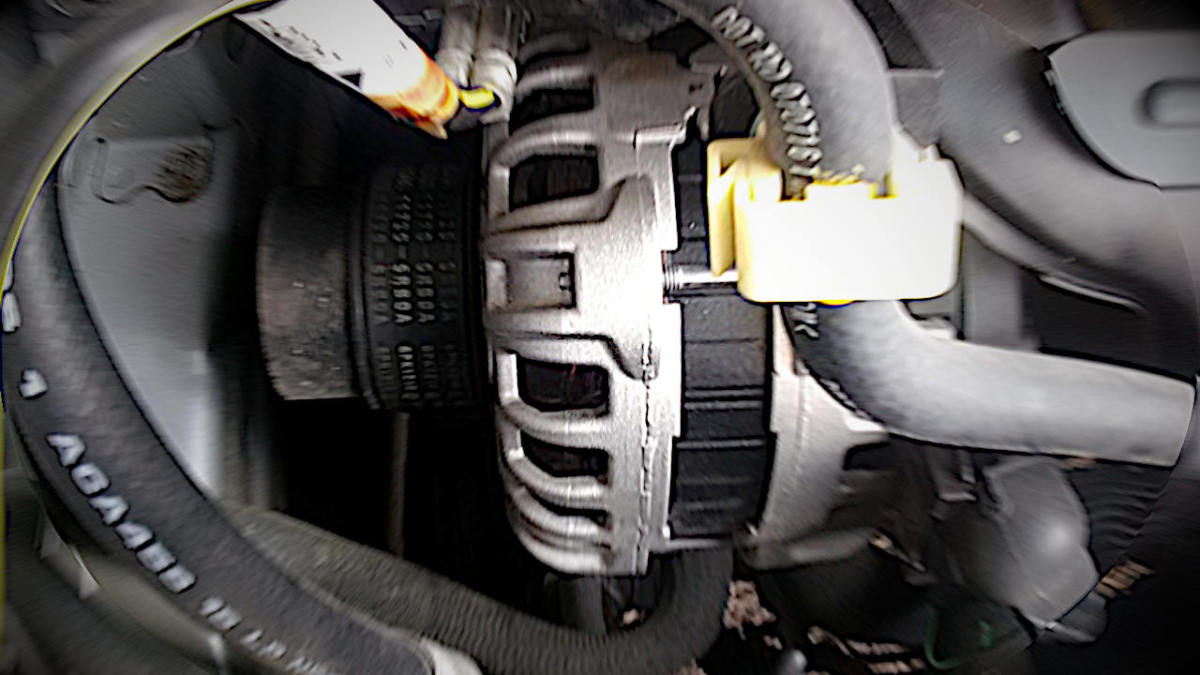What Can Drain a Car Battery When the Car is Off?

You get into your car, turn the key, and… nothing. Just that dreaded "click, click, click." Your car battery is dead.
But, what can drain a car battery when the car is off?
- Leaving a light on by accident.
- Dirty or loose connections on your battery or alternator.
- An electrical part that's not working correctly.
- A battery or alternator that's getting old or failing.
Your car's battery provides the power to start the engine and works with the alternator to power everything from your headlights to your radio.
Until one or more faults start to silently suck the life out of your battery when the car is parked and the engine is off.
Learning about the common and not-so-common reasons behind a battery drain can help you avoid the frustration of a dead battery.
In This Article
1. Your Vehicle Repair Manual
2. Common Culprits: Forgetting to Turn Things Off
3. The Not-so-common Drainers: Parasitic Drain and Diagnosis
VIDEO: Parasitic Draw Test
4. How the Environment Affect Your Battery's Health
5. Mechanical Problems and Other Things to Watch Out For
6. Keeping Your Battery Healthy: Prevention and Solutions
7. Conclusion
8. Resources to Help You With Your Battery Issues

1. Your Vehicle Repair Manual
Having the repair manual for your particular vehicle make and model is like having your personal mechanic's guide. Here, you'll find valuable information that can help you understand and fix common problems affecting a battery, charging system, and overall electrical system performance.
The manual helps you:
- Inspect the battery, connections, and wires.
- Figure out battery charging issues.
- Check the charging system.
It also provides descriptions of key vehicle systems, explaining how they work, and giving you step-by-step instructions for fixing common issues like:
- Engine misfires.
- Problem starting your car.
- Squeaky serpentine belts and how to replace them.
- Ignition system issues.
- Oil leaks.
- Brake noises or shaking.
- Coolant leaks and changing your coolant.
Plus, you'll find essential service and maintenance information that include:
- Images and photos to make repairs easier.
- Parts specifications.
- How tight to tighten bolts and screws (torque specifications) for critical components during replacements.
- What kind of fluids to use for your engine, transmission, brakes, and power steering, and how much you need.
Use the manual's wiring diagrams to track down electrical problems with actuators, electrical connections, switches, gauges, sensors, wiring harnesses, and other components.
And by following the maintenance schedule in the manual, you can prevent unexpected breakdowns, save money on repairs, and keep your car running smoothly.
You can easily find a Haynes repair manual for your car on Amazon.


2. Common Culprits: Forgetting to Turn Things Off
One of the most common reasons behind a dead battery is forgetting to switch something off after parking and leaving your car.
Here is a list of the usual suspects:
- Interior lights: Accidentally leaving the dome light on is an easy mistake. But you can just as easily forget about the glove box light, or the trunk light. Even these small lights can slowly drain your battery if left on for hours. Also, be aware of push switches in your door frames that might get stuck. Make a quick check before you lock up.
- Plugged-in gadgets: The number of gadgets we use in our cars keeps growing. USB chargers, GPS units, dash cams, and radar detectors can continue to draw power even when your car is off. Unplug them when you turn off the key to prevent them from draining your battery.
- Radio/Infotainment system: Your radio or infotainment system may seem off when you turn off the car, but sometimes it's just in standby mode. In this state, it can still be drawing power. Make sure it's completely off before you leave your vehicle.
- Headlights and parking lights: Headlights are easy to forget when we are in a hurry. Make it a habit to double-check that your headlights and parking lights are completely off after you turn off the ignition.
A quick check of your electrical accessories and a quick walk around your car can save you from a frustrating dead battery.

3. The Not-so-common Drainers: Parasitic Drain and Diagnosis
Even when you turn off your vehicle, one or more electronic modules quietly continue to use a small amount of battery power. This is perfectly normal. It's called parasitic load or parasitic drain.
They are similar to your phone in standby mode. But these modules go into sleep mode when you turn off your car after a period of 30 to 60 minutes or more, using a little bit of battery power to stay ready. Things like the lock system, the car's computer, and alarm system use power to keep their memory active.
Typically, the total power they draw will be less than 50 milliamps (mA). Some newer, more complex vehicles might go up to 85mA.
However, if the parasitic drain is higher than this normal range, it's like having a small but constant leak in your battery. Over a few days or even hours, this abnormal drain can empty a good battery.
3.1 What Causes Abnormal Battery Drain?
Besides a faulty electronic module, here are some other not-so-common culprits behind an excessive battery drain:
- Stuck relays: Relays are like electrical switches. If one gets stuck in the On position, it'll keep power flowing to a component even if it shouldn't be.
- Short circuits: This is electricity taking a shorter path back to the battery. A short circuit allows current—in a loose or damaged wire, for example—to take an unintended path, draining your battery quickly.
- Components that remain On: A bad component may continue to run even after shutting off the engine.
- Improperly installed aftermarket accessories: Your new sound or alarm system may be drawing too much power if it wasn't installed correctly.
To give you an idea of how quickly this can happen, a faulty component drawing just 750 mA (that's less than 1 amp) can leave you with a dead battery in about 24 hours.
Even a perfectly running module drawing 30mA of current, for example, can cause problems if you leave your car sitting for a long time. It could drain half your battery in about 30 days.
3.2 How Fast Does a Drain Empty Your Battery?
The following table shows you approximately how long it takes for different amounts of constant current drain to use up half the charge in a healthy car battery.
Constant Current Drain
| Time for 50% Discharge
|
|---|---|
50mA
| 16 days
|
100mA
| 8 days
|
250mA
| 3 days
|
500mA
| 1.5 days
|
750mA
| 1 day
|
1A
| 19 hours
|
2 A
| 12 hours
|
A battery that has been partially drained can cause other issues with your car, such as difficulty starting, engine stalling, and even false warning lights on your dashboard.
3.3 Diagnosing a Parasitic Drain
If you notice that your battery keeps dying even though it's relatively new, you might have a parasitic drain problem. Follow this step-by-step procedure to diagnose the problem:
- Check the basics: First, make sure all connections and wires are good: Battery connections: Check for corrosion (white or greenish buildup) on the battery and alternator terminals and where the wires connect. Clean them with a solution of water and baking soda if needed. Wire connections: Make sure that all wires that connect to the battery and alternator are tight and secured. Wiring condition: Closely examine the wires for any signs of damage like cracks or frayed insulation.
- Get a free check: If everything looks good, it's a good idea to have your battery and charging system tested. Most local auto parts stores offer this service for free. This will help rule out a bad battery or alternator as the primary issue.
- Locating a parasitic drain: To actually find the circuit or component causing the parasitic drain, first find out the normal range for the parasitic drain in your vehicle model (usually between 20mA and 30mA). Consult your owner's manual or repair manual. For detailed instructions on how to perform a parasitic battery drain test, you can check out this helpful article: How to Do a Parasitic Battery Drain Test. You can also watch this video that explains how to diagnose a battery drain using a voltage drop test, which is particularly useful for modern cars with computer systems.

4. How the Environment Affect Your Battery's Health
Environmental conditions and the physical condition of your battery can significantly impact its charge and overall health.
- Extreme temperatures: If your battery isn't in top shape, it might struggle to provide enough power to start the engine in freezing weather, when the oil thickens. Similarly, extreme hot can cause water to evaporate from the battery's electrolyte, leading to internal damage.
- Poor maintenance: Corroded, loose, or damaged battery or alternator terminals can reduce electrical flow, preventing the battery from charging properly and degrading its condition. Regular maintenance is important.
- Battery age: Over time, the cells inside your battery wear out, reducing their ability to store power. Most car batteries last between 3 and 5 years, so keep an eye on the age of your battery.
- Driving patterns: Frequent stop-and-go traffic, infrequent driving, or mostly short trips don't give the alternator enough time to fully recharge the battery. This can cause the battery to lose power and eventually fail. If you mostly drive short distances, consider taking your car for a longer drive occasionally to help recharge the battery.

5. Mechanical Problems and Other Things to Watch Out For
Sometimes, the reason your battery is losing charge isn't an electrical component left on, a hidden parasitic drain, or bad weather conditions. It can also come from mechanical problems in your car's charging system.
- Alternator and belt issues: The main job of your car's alternator is to restore the charge on your battery after the engine starts and send power to the electrical system in your vehicle. Failing alternator: If the alternator itself is going bad, it won't be able to charge the battery properly. Loose belt: If the belt running the alternator is loose or broken, the alternator won't spin correctly and won't charge the battery properly.
- Wiring problems: Your vehicle has a lot of circuits that carry electricity. Electrical shorts: A wire that accidentally touches something it shouldn't can create a short circuit, causing a drain on your battery. Loose or broken wires: Any loose or broken wire is a potential source of battery drain and poor charging.
- Bad ground connections: Your car electrical system needs good ground connections for electricity to flow back to the battery properly. Corroded, loosed, or broken grounds: If the electrical connections to the car's frame are corroded, loosed, or broken, it can cause a voltage drop. Your battery won't get the charge it needs, and eventually, your car might not even start.
Making sure these mechanical components are in good shape is crucial for reliable power and a healthy battery.

6. Keeping Your Battery Healthy: Prevention and Solutions
You can do a lot to prevent battery drain and avoid the frustration of a dead car. By developing a few good habits, keeping up with basic car care, and learning a couple of simple skills, you can significantly minimize battery problems.
- Check lights and accessories: Before you walk away from your car, double-check that all interior lights, the radio, and any accessories you might have been using (like phone chargers) are completely off.
- Exterior lights: Take a quick look around your car to make sure the lights are switched off.
- Stick to a regular maintenance routine: Regularly inspect your battery and alternator terminals and the connecting wires for any signs of corrosion, loose connections, or damage. Address any problems as soon as possible. If your battery has removable caps, check the electrolyte level periodically and top it off with distilled water as necessary.
- Consider a battery maintainer or trickle charger: If you don't drive your car frequently, or if most of your trips are short city drives, a battery maintainer or trickle charger can be a lifesaver. These devices charge your battery over time using a small amount of current, keeping it fully charged and in good condition. Learn more about them here: Using a Battery Maintainer and Trickle Charger.
- Be prepared: Learn how to jump-start safely: Even if you keep up with your car maintenance, a dead battery can sometimes happen. Knowing how to safely jump-start your car using jumper cables or a portable jump starter can get you back on the road quickly during an emergency. You can find instructions here: How to Jump a Car Safely.
- Know when it might be time for a new battery: Don't wait until your battery leaves you stranded. As your battery approaches three years old, have it checked regularly by a mechanic or at an auto parts store. Over time, batteries gradually lose their ability to hold a charge, and catching a weakening battery early can prevent unexpected breakdowns.
Following these simple tips as part of your car care routine can significantly reduce the chances of dealing with a dead car battery and help keep your vehicle running smoothly.
7. Conclusion
Being aware of the different culprits that can drain your car battery and potentially leave you stranded is essential for every car owner:
- Forgetting lights and accessories: Accidentally leaving a light or accessory on. Make a quick check before leaving your car. You'll save yourself from a lot of trouble.
- Silent drains: Faulty components can slowly drain your battery even when the car is off. If you suspect an electrical problem, don't ignore it.
- Environmental factors: Extreme temperatures can be hard on your battery. Be mindful of these conditions and take the necessary precautions.
- A little bit of maintenance goes a long way: Keeping up with your battery and other basic car maintenance are essential for preventing unexpected battery failures.
Incorporate these tips into your car care routine, be prepared, and keep your car powered up.
8. Resources to Help You With Your Battery Issues
- How to Clean Corroded Battery Terminals
Use this guide to clean corroded battery terminals before they turn into an expensive repair. - How to Charge a Dead Car Battery
Learn how to charge a dead car battery safely using jumper cables or a battery charger, following easy maintenance tips to increase your battery service life. - How to Test a Car Battery With a Multimeter or Hydrometer
This guide will show you how to use a digital multimeter, hydrometer, and other simple tools to troubleshoot, inspect, and clean your battery if necessary. - How to Test Your Alternator's Voltage Regulator
Learn how to test your car's voltage regulator to avoid replacing components unnecessarily. - Troubleshooting Alternator and Charging System Problems
Diagnose alternator and charging system problems with this practical guide to get your car back on the road faster.
This article is accurate and true to the best of the author’s knowledge. Content is for informational or entertainment purposes only and does not substitute for personal counsel or professional advice in business, financial, legal, or technical matters.
© 2025 Dan Ferrell

